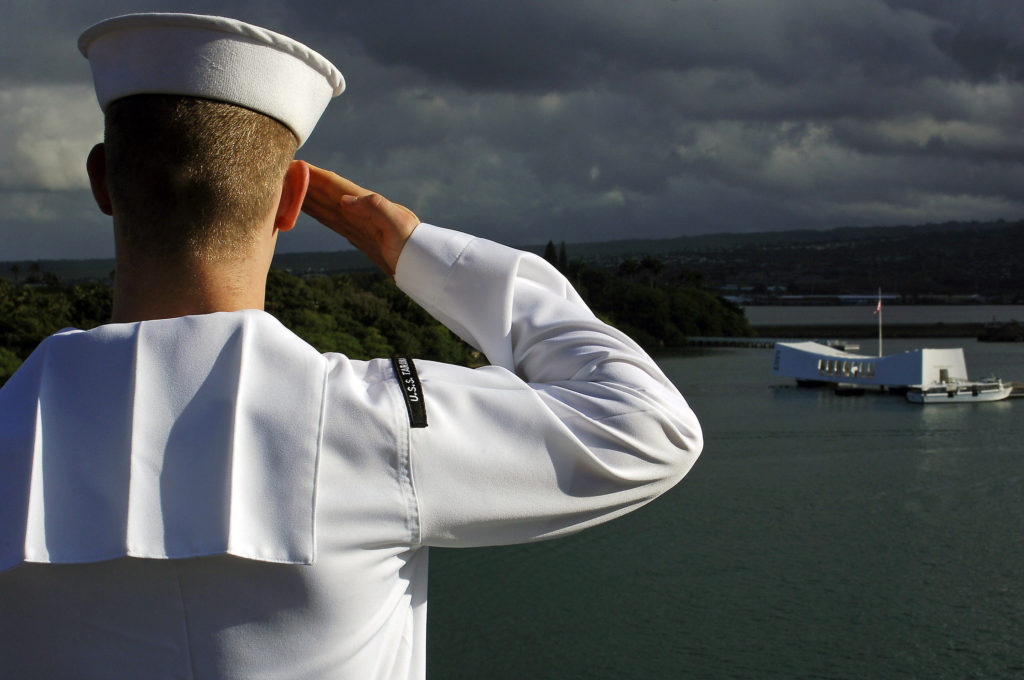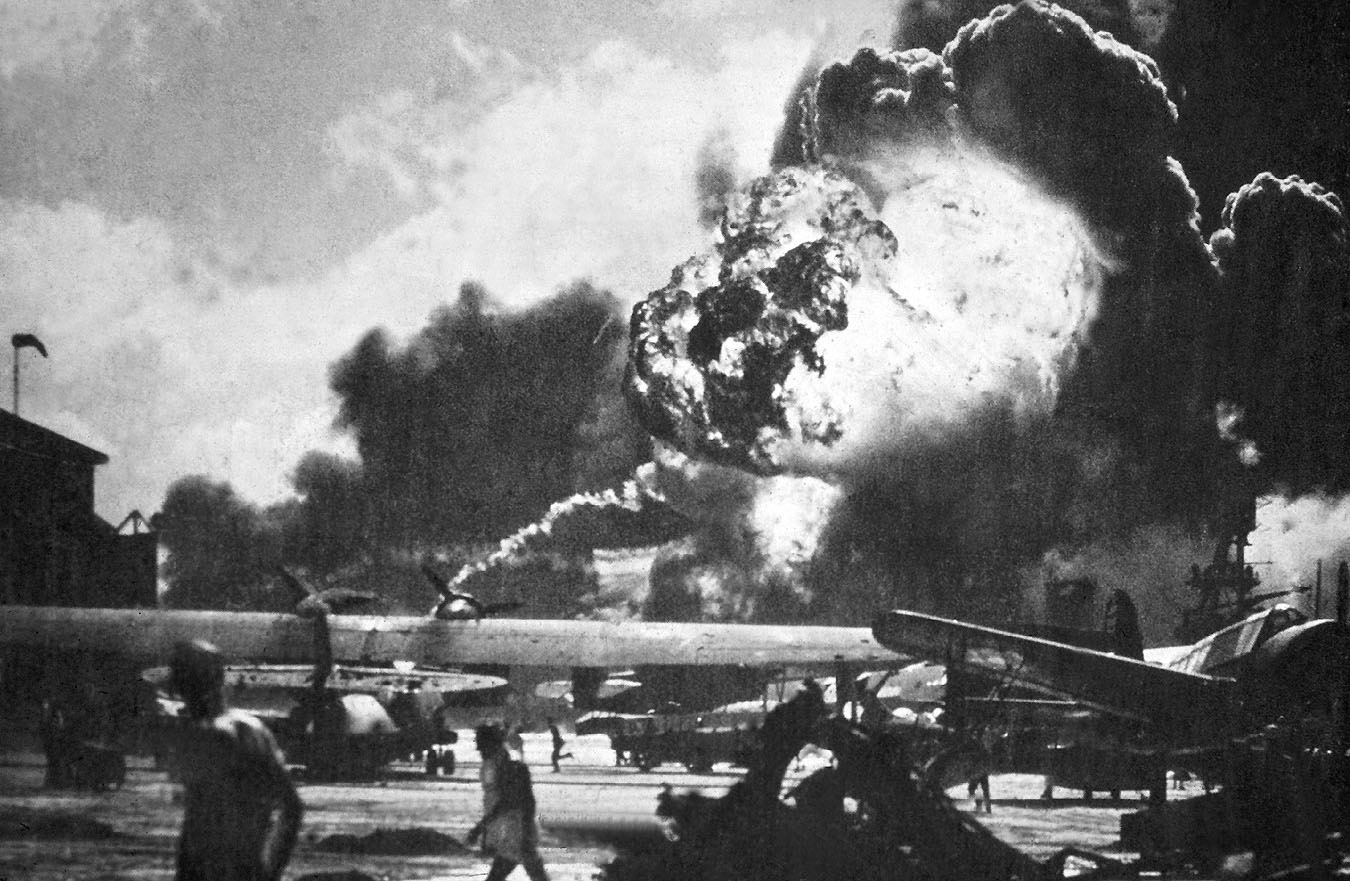It was just a quiet Sunday morning on December 7, 1941, in Pearl Harbor, Hawaii, in the middle of the Pacific. Nothing unusual was occurring; sailors were just waking up and making their way to the base. Then at about eight in the morning, hundreds of planes came out of nowhere and attacked the unsuspecting Americans. The Japanese had caught the Americans by surprise and were able to kill 2,403 service members, wound 1,178 more, damaging or destroying 19 ships, and destroying hundreds of airplanes.1
It was a devastating blow to the Pacific Fleet and the nation as a whole, catapulting America into World War Two. Excluding the Civil War, the attack at Pearl Harbor was the first invasion of American soil by a foreign country since the War of 1812. Japan was attempting to get the United States to lift sanctions on iron, oil, and steel. In the process, they attempted to paralyze the United States in the Pacific, amid their huge scale invasions of China, French Indochina (modern-day Vietnam), and the rest of the region. So on December 7, 1941, unprovoked they attacked the United States, not only at Pearl Harbor, but at other assorted American territories and bases. The attack commenced after the infamous break of radio silence, “Tora! Tora! Tora! (Tiger! Tiger! Tiger!)”
Even though the Japanese were able to inflict heavy casualties on the Americans, they failed to destroy the repair shops, oil tanks, or any aircraft carriers (which were all out to sea). The attack was deadly, but did not destroy the American resolve. Their attempt to prevent the United States from entering the Pacific achieved the opposite result.2 An indignant America declared war on Japan, with both chambers of Congress passing a declaration of war with huge majorities (82-0 in the Senate and 388-1 in the House).3 On December 11, 1941, the other Axis Powers, the allies of Japan, declared war on the United States. Now America was fully in the war, in the Pacific and Europe, with Hitler’s Germany and Mussolini’s Italy having declared war on them.4&5
The United States ramped up production to get retribution and win the war. In fact, they were able to salvage almost all the ships at Pearl Harbor and return back to service before the end of the war. Of the 19 ships damaged and or sunk, the only ones that were unsalvageable were the USS Arizona, the USS Oklahoma, and the USS Utah.6
The United States was quickly able to mobilize the Pacific Fleets and on June 4, 1941, the tide started to turn in the Pacific. On their quest to control the Pacific, the Japanese made a fatal mistake by attacking the American Base on the Island of Midway. The Japanese were unaware that the American carrier fleet was just east of the island and heading towards them, ready for battle.
After the Japanese planes refueled on their carriers, the Americans released their dive bomber and dealt a deadly blow to the Japanese fleet, from which they would never recover. In an astounding victory the Americans won, sinking four Japanese carriers and one cruiser. The Japanese lost ten times as many men and hundreds more planes. The Battle of Midway still cost America two ships; the USS Yorktown was sunk by a Japanese submarine and an American destroyer was also destroyed. Midway halted the Japanese expansion and put the Americans in a good spot to start “island hopping” their way to victory in the Pacific by September 2, 1945.7
We must never forget what happened on December 7, 1941. We must always remember that on that day, thousands of Americans were killed or injured. This brazen attack led directly to American involvement in the Second World War, the most deadly war in world history. America won the war, but the victory was hard fought. The attack at Pearl Harbor altered the course of history. President Franklin Delano Roosevelt summarized the level of devastation of the attack very well in his address to Congress the day after, famously uttering the words, “December 7, 1941, a date which will live in infamy.”8
And from the ashes of destruction, America, and Americans, rose up to once again fight for freedom.

1.“Pearl Harbor: Attack, Deaths, & Facts,” History, December 6, 2022,
https://www.history.com/topics/world-war-ii/pearl-harbor.
- “Pearl Harbor: Attack, Deaths, & Facts,” History, December 6, 2022, https://www.history.com/topics/world-war-ii/pearl-harbor.
- “The Path to Pearl Harbor,” The National WWII Museum, https://www.nationalww2museum.org/war/articles/path-pearl-harbor.
- “S.J.Res. 116, Declaration of War on Japan, 1941,” Visit the Capitol, https://www.visitthecapitol.gov/artifact/sj-res-116-declaration-war-japan-december-8-1941.
- “December 11: Germany declares war on the United States,” History, https://www.history.com/this-day-in-history/germany-declares-war-on-the-united-states.
- “December 1941: U.S. and World Events plus Additional Resources,” Pare Lorentz Center at the FDR Library, http://www.fdrlibrary.marist.edu/daybyday/event/december-1941-9/#:~:text=On%20December%2011%2C%201941%2C%20Germany,that%20Germany%2C%20Italy%20%5B%E2%80%A6%5D&text=On%20December%2016%2C%201941%2C%20Congress,the%20reorganization%20of%20government%20%5B%E2%80%A6%5D.
- “Pearl Harbor Ships Returned to the Service,” Pearl Harbor, February 2, 2019, https://pearlharbor.org/blog/pearl-harbor-ships-returned-to-service/.
- “The Battle of Midway,” National WWII, Museum, https://www.nationalww2museum.org/war/articles/battle-midway.
- Franklin D. Roosevelt, “Speech by Franklin D. Roosevelt,” New York Transcript, 1941, Pdf, https://www.loc.gov/item/afccal000483/.

